Running a small business in a market dominated by large corporations presents both unique challenges and valuable opportunities. While big competitors benefit from extensive financial resources, established brands, and widespread distribution networks, small businesses hold strategic advantages that can effectively balance the competitive landscape.
Successfully positioning your small business means capitalizing on strengths such as personalized customer service, rapid adaptability, and deep integration within your community. By clearly communicating these unique advantages, small businesses can effectively differentiate themselves and attract customers who value personalized, authentic experiences.
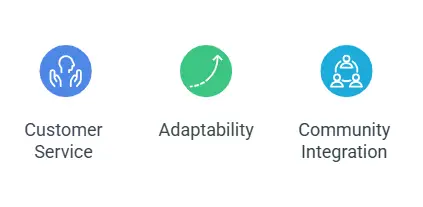
Rather than viewing size and scale as insurmountable obstacles, small businesses can leverage these differences to their advantage, fostering long-term customer loyalty and establishing a strong, distinctive brand identity.
In this article, we’ll explore powerful strategies for positioning your small business to not only compete but thrive in markets typically dominated by larger corporations. You’ll discover how embracing and communicating your unique capabilities can resonate deeply with your target audience, setting you apart from the competition.
Understanding the Importance of Positioning Your Small Business
Positioning your small business is critical for distinguishing yourself from larger competitors that dominate market share through scale and brand recognition. While big businesses tend to have expansive resources and broad market strategies, small businesses can leverage precise positioning strategies to effectively target niche markets.
Positioning is essentially the process of creating a distinct identity for your business in the minds of your potential customers. This distinct identity helps your customers understand quickly why your business is the best fit for their needs and preferences. Clear and strategic positioning allows your small business to communicate its value proposition effectively, ensuring you capture the attention and loyalty of your ideal customer base.
Moreover, effective positioning is not merely about marketing messages; it is embedded within your products, services, and customer interactions. When your customers clearly understand what your business stands for, it creates a powerful, lasting impression, helping your small business not just compete but also thrive in the face of stiff competition from larger enterprises.
Effective positioning helps your small business:
- Differentiate clearly from competitors
- Establish a strong brand identity
- Attract loyal customers who prefer personalized service
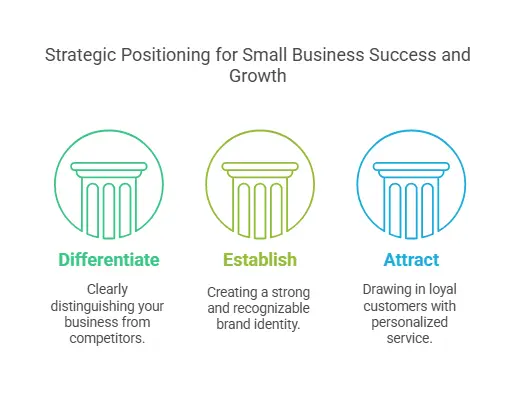
Identifying Your Unique Selling Proposition (USP)
Your Unique Selling Proposition (USP) is essential for differentiating your small business in crowded markets. A USP articulates precisely why customers should choose your products or services over those offered by larger competitors.
Understanding and defining your USP requires introspection and careful market analysis to identify what genuinely sets your business apart. Perhaps your small business offers handcrafted products, personalized customer support, or exclusive access to unique resources unavailable to large-scale competitors.
A well-defined USP helps your customers quickly recognize the added value your business provides. To successfully communicate your USP, it must be clearly and consistently featured in your branding, marketing efforts, and customer communications. By regularly reinforcing your unique offerings through all interactions, your small business can significantly enhance its visibility and credibility. Ultimately, the clarity and strength of your USP can substantially influence purchasing decisions, leading to increased customer loyalty and a stronger competitive stance.
Clearly articulate your USP in your marketing materials, website, and communications by:
- Highlighting unique features or ingredients of your products.
- Emphasizing superior customer service and personalized care.
- Showcasing your local connections or community involvement.
- Demonstrating sustainable or ethical business practices.
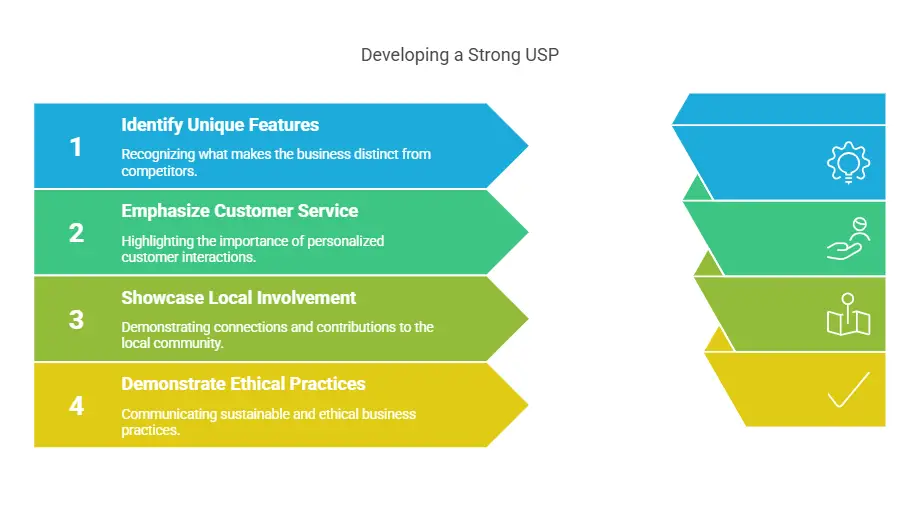
For example, a bakery might highlight that all its products use organic, locally sourced ingredients, which large supermarket bakeries typically don’t offer.
Leveraging Personalization and Exceptional Service
Personalization and exceptional service are powerful tools that small businesses can use to compete effectively against larger enterprises. Large corporations, due to their scale, often struggle to provide personalized experiences consistently. This creates a valuable opportunity for your small business to step in and excel. By investing in genuine, personalized interactions, your small business can build deep, lasting relationships with customers, significantly enhancing customer satisfaction and loyalty.
Personalization goes beyond simply remembering customer names; it involves understanding individual customer preferences, proactively meeting specific needs, and continuously demonstrating genuine care for customer satisfaction. Exceptional service also means offering support and responsiveness that large businesses often fail to match. Whether it’s through personalized product recommendations, tailored services, or consistent follow-ups, personalized service positions your small business as attentive, customer-centric, and uniquely valuable in a marketplace where impersonal interactions are increasingly common.
For example, a small clothing boutique can:
- Track individual customers’ style preferences.
- Proactively recommend new arrivals tailored to their tastes.
- Send personalized alerts for exclusive offers or special events.
- Provide follow-up services to gather feedback and make further recommendations.
This approach creates meaningful relationships and significantly enhances customer loyalty.
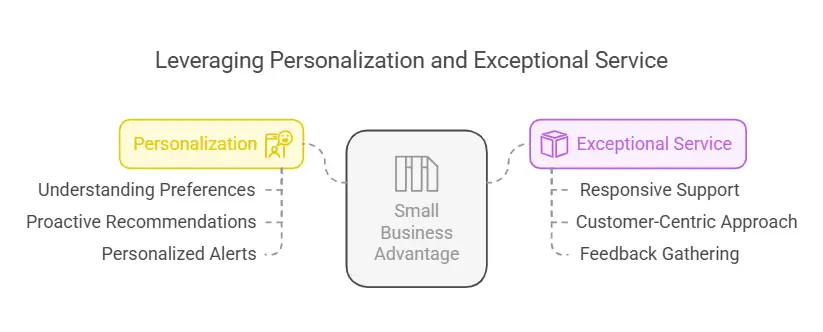
Leveraging Customer Feedback and Testimonials
Customer feedback and testimonials play a crucial role in positioning your small business as trustworthy and customer-focused. They validate your business, highlight strengths, and provide valuable insights for improvement. Positive testimonials reinforce trust and credibility, making them powerful tools for attracting new customers.
To make the most of customer feedback and testimonials:
- Regularly request feedback through surveys, social media, or in-person interactions.
- Highlight strong testimonials on your website and marketing materials.
- Use feedback to refine products, services, and customer experience.
- Encourage satisfied customers to share their experiences publicly.
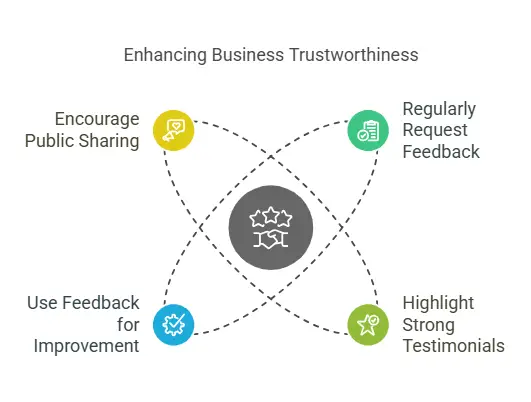
For example, a small bookstore might display customer reviews praising its knowledgeable staff and unique book selections, helping attract book lovers who value personalized recommendations and curated selections. Customer feedback validates your business, highlights areas of strength, and pinpoints opportunities for growth.
Positive testimonials are particularly powerful, reinforcing trust and influencing potential customers’ decisions. Small businesses have the unique advantage of quickly and genuinely incorporating this feedback due to their close interactions with customers.
Building Strong Community Connections
Building strong community connections provides another effective way of positioning your small business. Positioning your small business within your community allows for intimate integration through leveraging personal relationships, local knowledge, and active involvement. Establishing genuine connections enhances your business’s visibility, cultivates loyalty, and fosters goodwill among local customers, all crucial for positioning your small business effectively.
Participating actively in community events, sponsoring local initiatives, and forming strategic alliances with other local businesses can further strengthen your local presence. These activities effectively position your small business as a trusted and integral part of your community’s social fabric. Community involvement demonstrates genuine care and investment in the well-being of the community, creating emotional and social bonds larger competitors typically struggle to replicate authentically. By positioning your small business as genuinely community-oriented, you significantly differentiate yourself from impersonal corporate competitors, building deeper, more resilient customer relationships.
A local coffee shop might demonstrate community commitment by:
- Sponsoring youth sports teams.
- Hosting community events like open-mic nights or art exhibits.
- Collaborating with local artisans or suppliers.
- Supporting local charities and fundraisers.
- Offering space for community meetings or gatherings.
These actions clearly demonstrate a level of community engagement and authenticity that large chain cafes rarely replicate.
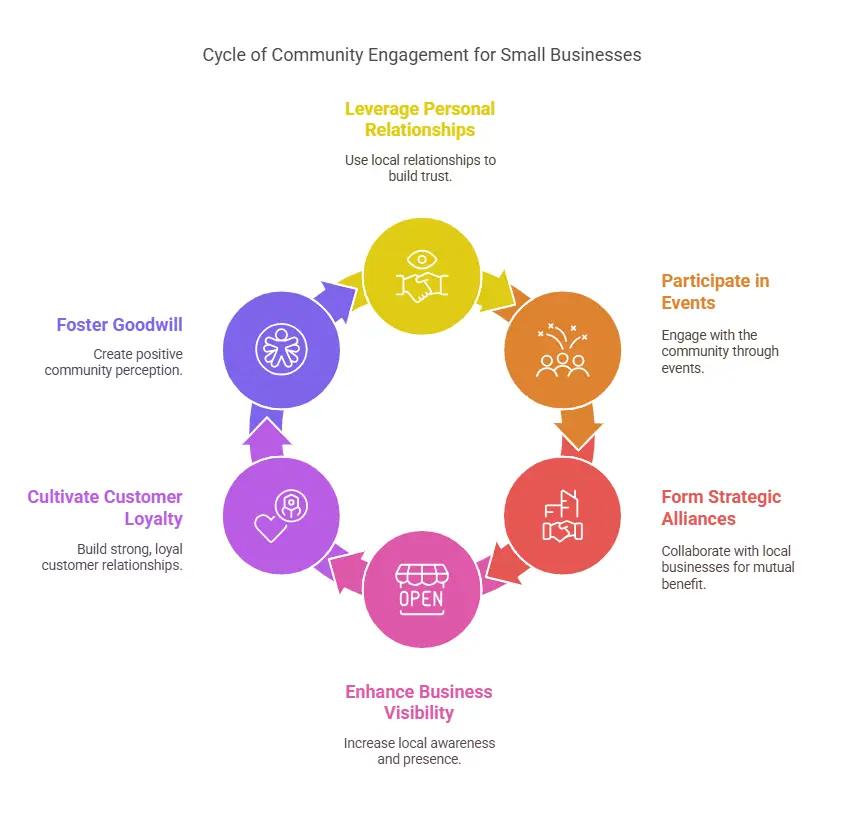
Leveraging Content Marketing to Establish Authority
Positioning your small business effectively requires demonstrating expertise and authority in your niche. Content marketing is a powerful way to achieve this by providing valuable, informative, and engaging content that helps differentiate your brand from larger competitors. By producing high-quality blogs, videos, social media posts, and podcasts, you can establish credibility and attract a loyal audience.
Content marketing positions your small business as an industry leader, making it easier to compete with companies that rely on broader, less personalized marketing strategies. The key to success is consistently delivering content that answers customer questions, addresses pain points, and showcases your expertise. This approach not only improves visibility but also strengthens long-term customer relationships.
Here are key content marketing strategies for positioning your small business as an authority:
- Blogging on Industry Topics – Write in-depth articles on key trends, FAQs, and solutions to customer problems.
- Video Tutorials and How-To Guides – Create engaging content that educates and informs, reinforcing your expertise.
- Social Media Thought Leadership – Share insights and interact with your audience to build credibility.
- Podcasting and Webinars – Offer expert discussions and training sessions that showcase your knowledge.
- Customer Case Studies and Success Stories – Highlight real-world examples of how your business has made a difference.
- SEO-Optimized Content – Improve search rankings to ensure potential customers find your business easily.
For example, a small gardening business can use content marketing for positioning their small business as a trusted source by sharing seasonal planting guides, garden maintenance videos, and expert Q&A sessions. This not only attracts new customers but also builds long-term trust and loyalty.
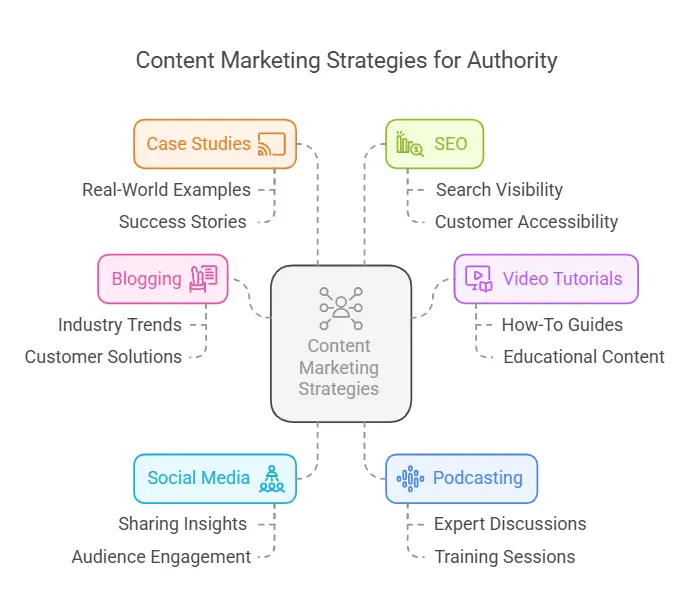
Competing Through Agility and Flexibility
Positioning your small business successfully against larger competitors requires agility and flexibility. Unlike corporations burdened by bureaucratic processes, small businesses can swiftly adjust to market changes, customer demands, and new opportunities. This ability to adapt is a key advantage, allowing you to quickly respond to trends before bigger competitors can react.
By positioning your small business as an agile and customer-focused brand, you can seize emerging trends, personalize customer interactions, and refine your offerings with minimal delay. Being able to pivot quickly not only ensures relevance in a fast-changing market but also strengthens customer relationships.
Here are key ways agility helps in positioning your small business for success:
- Rapid Product or Service Adjustments – Quickly adapt your offerings to meet evolving customer needs.
- Personalized Customer Service – Provide tailored solutions that set you apart from rigid, impersonal competitors.
- Fast Decision-Making – Minimize delays and take advantage of market shifts immediately.
- Trend-Driven Marketing – Capitalize on viral trends and new advertising opportunities faster than larger brands.
- Streamlined Operations – Reduce overhead costs and increase efficiency through lean business practices.
- Crisis Management and Resilience – Quickly pivot strategies to overcome industry disruptions or economic downturns.
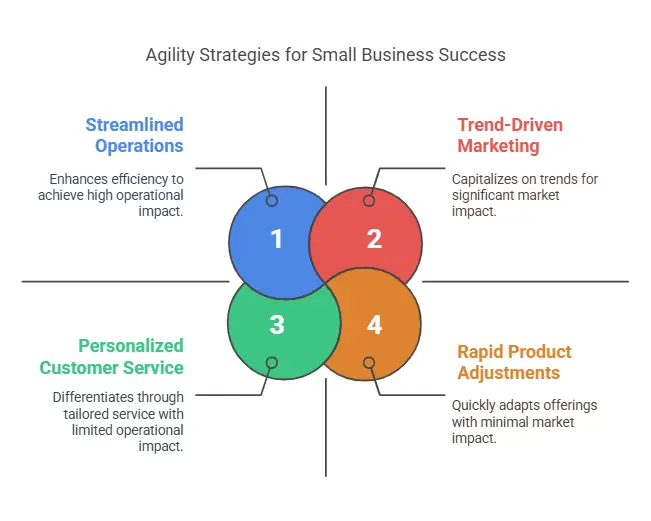
For instance, a boutique fashion retailer can enhance customer engagement by rapidly launching limited-time collections in response to seasonal trends. By positioning their small business as a dynamic and trend-responsive brand, they can build a loyal following that values innovation and exclusivity.
By embracing agility and flexibility, positioning your small business for long-term success becomes easier. The ability to adapt quickly, personalize services, and stay ahead of trends gives you a powerful competitive edge over larger corporations that struggle with slow-moving processes.
Using Storytelling to Connect Emotionally
Storytelling is a compelling tool for positioning your small business uniquely against larger competitors. While big corporations may have extensive marketing budgets, small businesses can leverage authentic, personal stories to connect deeply with customers on an emotional level. Effective storytelling involves sharing your business’s origins, values, challenges, and triumphs, creating relatable narratives that resonate with your audience.
By weaving stories into your marketing content—whether through your website, social media, or customer interactions—you build an emotional connection that fosters trust and loyalty. This personal touch differentiates your business from impersonal corporate entities, enabling customers to form meaningful attachments to your brand.
Here are some key elements to incorporate into your storytelling strategy:
- Your Business Origins – Share the story of how and why you started your business. Was it born out of a personal passion, a unique challenge, or a desire to solve a problem?
- Core Values and Mission – Communicate the principles that drive your business. Customers connect with brands that align with their own values.
- Challenges and Triumphs – Highlight obstacles you’ve overcome and milestones you’ve achieved. This makes your brand more relatable and inspiring.
- Customer Stories and Testimonials – Feature real customer experiences that showcase how your product or service has made a difference in their lives.
- Behind-the-Scenes Insights – Show the process behind your products, introduce your team, or give a glimpse into daily operations to add authenticity.
- Community Involvement – If your business supports local initiatives or charities, share these efforts to strengthen emotional ties with your audience.
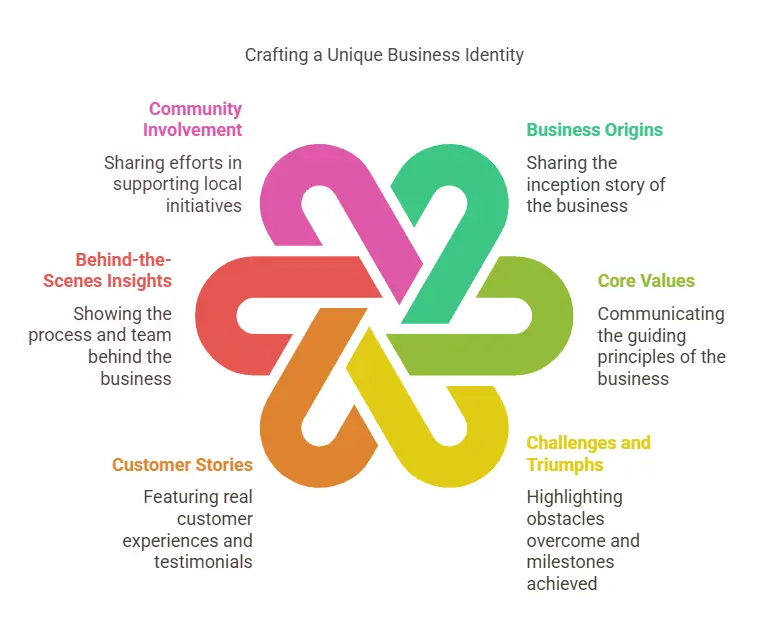
For example, a small artisanal bakery can share stories about sourcing ingredients from local farms or the journey behind its recipes, creating an authentic narrative that larger bakery chains rarely replicate. Authentic storytelling can transform ordinary transactions into memorable experiences, significantly enhancing your competitive position.
Highlighting Ethical Practices and Sustainability
Consumers increasingly value ethical practices and sustainability, providing an opportunity for your small business to stand out against larger competitors. Clearly communicating your commitment to ethical sourcing, sustainability, fair trade, and community support can strongly differentiate your brand and appeal to socially conscious consumers.
Unlike larger corporations that might struggle with transparency or authenticity regarding ethical practices, small businesses can closely manage and demonstrate their genuine commitment through tangible actions. This involves clearly showcasing sustainable sourcing, environmentally friendly packaging, or support for local communities in your marketing materials and customer communications.
Here are some key ways to highlight your ethical and sustainable practices:
- Sustainable Sourcing – Highlight how you source materials or ingredients responsibly, such as using organic, recycled, or locally sourced products.
- Eco-Friendly Packaging – Showcase efforts to reduce waste by using biodegradable, recyclable, or minimal packaging.
- Fair Trade and Ethical Labor – Share details about how you ensure fair wages, safe working conditions, and ethical treatment of workers.
- Carbon Footprint Reduction – Communicate any efforts to reduce emissions, use renewable energy, or implement sustainable production methods.
- Giving Back to the Community – Promote initiatives like donating a percentage of profits to charities, supporting local businesses, or engaging in volunteer efforts.
- Transparency in Business Practices – Provide customers with clear, honest information about your ethical and sustainability commitments through website content, product labels, and social media updates.
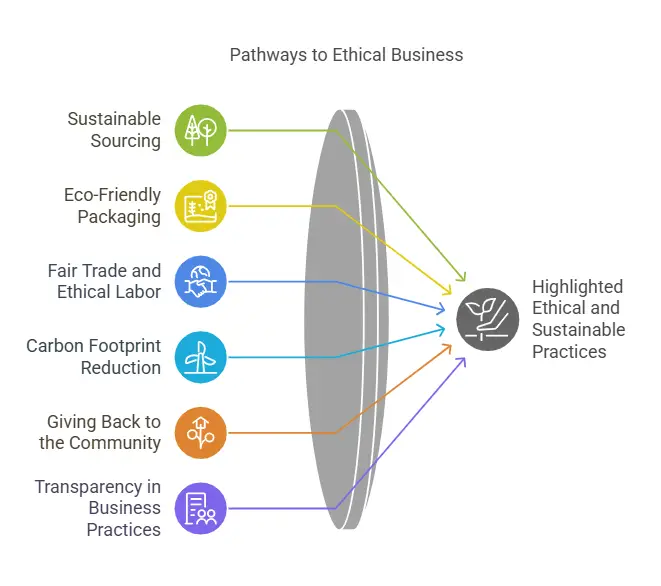
Transparency about these practices builds credibility and attracts customers looking to align their purchases with their values. A small skincare brand, for example, can position itself by emphasizing cruelty-free practices and environmentally sustainable packaging. By authentically and clearly communicating these ethical commitments, your small business can significantly differentiate itself, capturing customer loyalty and market share from less transparent, larger competitors.
Case Study: Willow’s Organic Grocery
Willow’s Organic Grocery, a small, family-owned business located in a suburban neighborhood, faced significant competition from major supermarket chains.
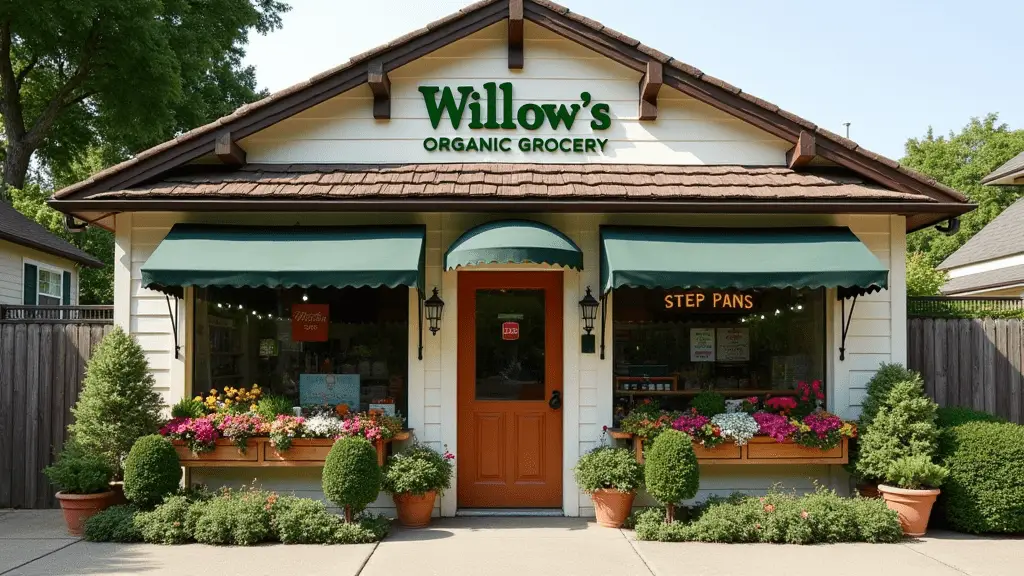
Problem
Difficulty standing out among larger, well-established supermarkets
- Limited marketing budget and resources
- Need to attract and retain loyal customers
Challenge
Willow’s owners recognized the importance of clearly positioning their store around unique values to compete effectively against larger competitors. They identified their main challenge as distinguishing themselves in a crowded market where convenience and pricing often favored big supermarket chains.
Solution
Willow’s strategically positioned itself around two clear pillars:
- Fresh, locally-sourced organic produce
- Personalized customer experiences
By clearly communicating their commitment to supporting local farmers and providing sustainably grown produce, they established a strong USP that resonated deeply with their target customers—families and health-conscious individuals.
To further differentiate, Willow’s implemented personalized services:
- Customized grocery baskets
- Special order items
- Personal shopping assistance
Employees consistently engaged with customers, remembered their preferences, and provided tailored product recommendations. Willow’s also strengthened community connections by organizing weekly events:
- Farmer’s markets
- Cooking demonstrations
- Nutritional workshops
Through strategic content marketing, Willow’s shared engaging stories about their farmers, sustainability practices, and community involvement via social media and their website, reinforcing their positioning.
Within two years, Willow’s Organic Grocery had successfully built a loyal customer base that preferred shopping at Willow’s over larger supermarkets due to:
- Unique values
- Personalized attention
- Authentic community integration
This case study illustrates how clearly defined positioning and effectively leveraging unique strengths allow small businesses to thrive even amidst significant competition.
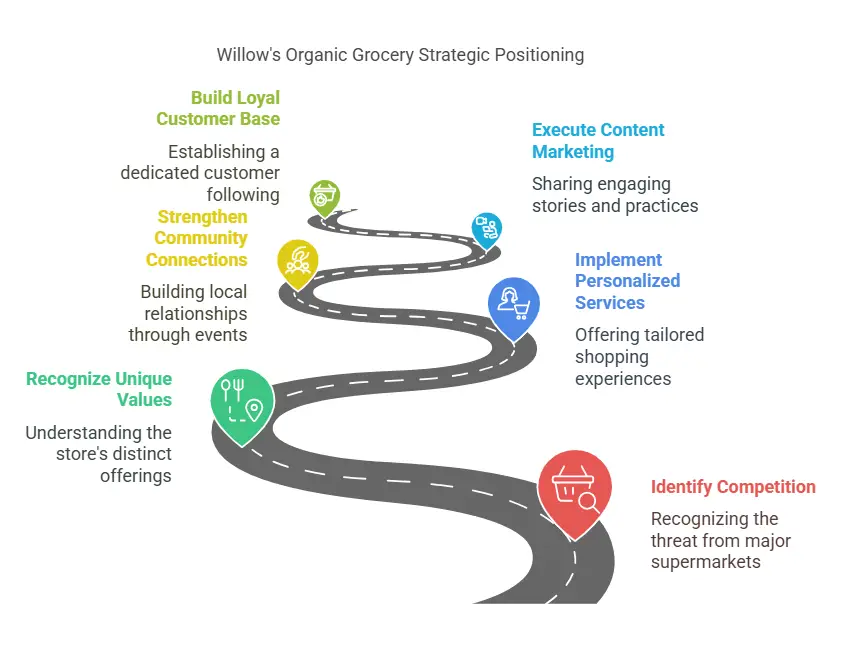
Conclusion: Embracing Small Business Strengths
Successfully positioning your small business against larger competitors involves recognizing and embracing your inherent strengths. While large businesses may dominate in scale and reach, your small business can leverage its agility, personalized customer relationships, community integration, and unique selling propositions.
By focusing on creating authentic, memorable experiences for your customers and consistently communicating your distinctive value, your small business can thrive and outshine bigger competitors. Remember, effective positioning isn’t just about competing; it’s about establishing your business as an indispensable and cherished part of your customers’ lives.
Frequently Asked Questions
What is small business positioning and why is it important?
Small business positioning is the process of creating a distinct identity for your company in the minds of your target customers. It’s important because a clear positioning highlights what makes your business unique and why you’re the best choice, helping you stand out from larger competitors. Effective positioning builds a strong brand, attracts loyal customers who value your strengths, and allows your small business to compete more successfully in the market.
How can a small business identify its unique selling proposition (USP)?
A small business can identify its unique selling proposition by examining what sets it apart from competitors and what special value it offers to customers. This involves analyzing your products, services, and customer experience to find a distinct benefit that bigger companies can’t easily match – for example, handcrafted quality, personalized service, niche expertise, or other exclusive features. Once you pinpoint your USP, clearly incorporate it into your marketing and branding so customers immediately understand why your business is the better choice.
How can personalized customer service help a small business compete with larger companies?
Personalized customer service gives small businesses an edge by creating a more meaningful and memorable experience for each customer. Unlike large corporations, a small business can get to know customers individually, remember their preferences, and respond quickly to their needs or feedback. This personal touch makes customers feel valued and builds strong loyalty, positioning your business as more customer-focused and responsive than bigger competitors with impersonal service.
Why are customer testimonials and reviews important for a small business’s positioning?
Customer testimonials and reviews act as social proof that your small business delivers on its promises. Positive feedback from real customers builds trust and credibility, reassuring others that your products or services are high quality and reliable. By showcasing testimonials and good reviews (for example, on your website or social media), you highlight your business’s strengths and customer satisfaction, which strengthens your reputation and encourages new customers to choose you over competitors.
How does community involvement enhance a small business’s positioning?
Community involvement can greatly strengthen a small business’s market positioning by building local trust and loyalty. When your business actively participates in community events, supports local causes, or partners with other local organizations, it shows that you genuinely care about the community you serve. This kind of engagement boosts your visibility and goodwill among local customers, helping to position your business as a trusted, integral part of the community – something large corporate competitors usually can’t replicate, giving you a distinct competitive advantage.
Further reading
Ashley Thomson, “How Small Businesses Can Compete with Big Players: 5 Tactics + 15 Examples,” Tenfold Business Coaching, accessed March 7, 2025, https://tenfoldcoaching.com.au/business-advice/marketing/how-small-businesses-compete-big-players-tactics-examples/.
Melissa Houston, “Can Small Businesses Win Big in a Competitive World?” Forbes, June 12, 2024, https://www.forbes.com/sites/melissahouston/2024/06/12/can-small-businesses-win-big-in-a-competitive-world/.
Vorecol, “How Can Small Businesses Effectively Compete with Larger Corporations for Market Share?” Vorecol Blog, accessed March 7, 2025, https://vorecol.com/blogs/blog-how-can-small-businesses-effectively-compete-with-larger-corporations-for-market-share-123180.
Tim Dimoff, “Small Business Can Compete with Large Companies,” COSE Blog, December 15, 2023, https://cose.org/blog/cose-resources/small-business-can-compete-with-large-companies/.
Dennis Halverson, “Strategies for Competing With Large Corporations Among Small Property Management Businesses” (Doctoral dissertation, Walden University, 2023), https://scholarworks.waldenu.edu/cgi/viewcontent.cgi?article=15435&context=dissertations.
Business Casual, “How Small Business Can Beat the Larger Competition – 10 Winning Strategies for Success,” YouTube Video, 15:23, October 10, 2024, https://www.youtube.com/watch?v=vibQBpnT1gY.
The Futur, “Small Business vs. Big Business – How to Win?” YouTube Video, 12:05, March 5, 2024, https://www.youtube.com/watch?v=AF7BHU2AQSY.
HubSpot, “Competing Against Large Corporations: Small Business Survival Strategies,” YouTube Video, 18:47, August 22, 2024, https://www.youtube.com/watch?v=BaBOi4jmFHk.







